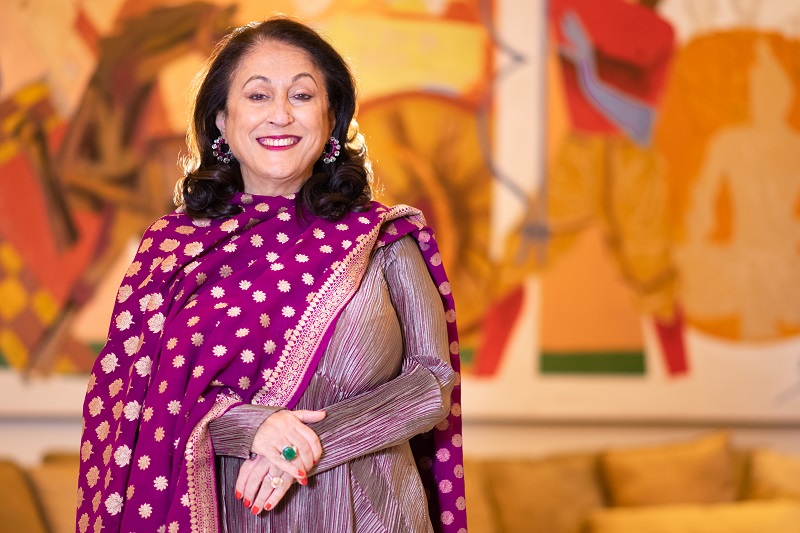London’s Tate Modern encouraged visitors to browse through its digitised collection of over 77 thousand artworks, New York’s Metropolitan Museum of Art produced 360° virtual tours of its spaces and, closer home, the National Museum in New Delhi kept up with its patrons through regular informative posts on Instagram. Art galleries and museums put their best foot forward to counter the worldwide lockdown this year, and it has been quite a learning process, says Kiran Nadar, founder and chairperson of the Kiran Nadar Museum of Art, the first private art museum in India.
As a connoisseur and collector of art, she has been instrumental in forging collaborations with art institutions across the globe, increasing the visibility of contemporary and modern Indian art and creating a museum-going culture through exhibitions and programs. But with the physical spaces closed due to the pandemic, KNMA has also had to tap into virtual experiences. “We had been doing things on virtual platforms, but not to the extent that we are doing now,” says Nadar.
While many are not happy about experiencing paintings and installations through their laptop screens, others have lauded how online exhibitions have actually opened up and democratised gallery spaces for people near and far. Nadar also agrees with the thought when she says, “You cannot compare the actual gallery with a virtual one. But, through virtual platforms, we have managed to deliver our products to people all over, whether they are art lovers or laypersons or children.”
People under lockdown in the middle of a global health crisis have also had something to take their minds off the horrors around them thanks to galleries and museums taking their collections and programming online. “It has been depressing for people this year, and art has kept them going by engaging them,” says Nadar. What does she have to say then about the fact that art and artists were termed “non-essential” by popular polls during the pandemic? “I do not agree at all with the thought that art is a non-essential part of life,” she says, highlighting how art has, in fact, always been an important facet of the country. “India has a whole heritage of art, with sculptures dating back to the Before Christ era. We have the monuments of Ajanta and Ellora, of Sanchi and Khajuraho. There cannot be any thought about art—including the performing arts—as non-essential here. They are important, and should be nurtured in times like these,” she says.

Keeping with this sentiment, KNMA has also continued with regular online programming and workshops, especially for children at home, and building virtual exhibitions and tours of its spaces to keep the spirit of art alive. The 360° virtual tour and 3D walkthrough which can be accessed by anyone on the KNMA website have been built to recreate the experience of walking through the gallery and standing in front of the artworks to ponder upon them, just as one might have done in the pre-Covid era. The virtual walkthrough takes visitors through four exhibitions currently, including a Zarina Hashmi retrospective, and comes with written notes and additional photos and videos to make the material accessible for even the most art-unconscious beginner. “Art has caught people’s interest now. And although galleries and museums are still in the nascent stages of developing virtual exhibitions and programs, they are doing well, and it is becoming easier for people to follow good work and keep up with what is happening,” says Nadar. The museum website is also hosting a ‘10-years-exhibition’, reflecting on KNMA’s coming-of-age as it celebrates a decade of its existence this year.
And all this labour has not been lost too. “We have been getting good feedback and footfall—more like ‘eyeballs’—throughout this time, especially for the learning programs,” Nadar shares. But as the world of art moves online with long and definite strides, producing online talks and video exhibitions, digitising spaces and transforming them into 3D tours, and even conceiving completely virtual galleries (for instance, Stuart Semple’s ambitious VOMA project), does the actual gallery fear being left behind? “I only hope, that when the pandemic is over, we can retain all the people following us virtually right now and get more involved with the museum in its actual form,” concludes Nadar.

